Shenzhen’s transition to the world’s largest fully-electric fleet
- Like
- Digg
- Del
- Tumblr
- VKontakte
- Buffer
- Love This
- Odnoklassniki
- Meneame
- Blogger
- Amazon
- Yahoo Mail
- Gmail
- AOL
- Newsvine
- HackerNews
- Evernote
- MySpace
- Mail.ru
- Viadeo
- Line
- Comments
- Yummly
- SMS
- Viber
- Telegram
- Subscribe
- Skype
- Facebook Messenger
- Kakao
- LiveJournal
- Yammer
- Edgar
- Fintel
- Mix
- Instapaper
- Copy Link
Posted: 28 February 2020 | Chris Liang - Shenzhen Bus Group, Hallie Liao - Shenzhen Bus Group | 1 comment
Shenzhen, China boasts the largest electric bus fleet in the world. Hallie Liao and Chris Liang of the International Development Department at Shenzhen Bus Group spoke to Intelligent Transport’s Luke Antoniou about the transition to e-mobility and the challenges that came with becoming fully electric.
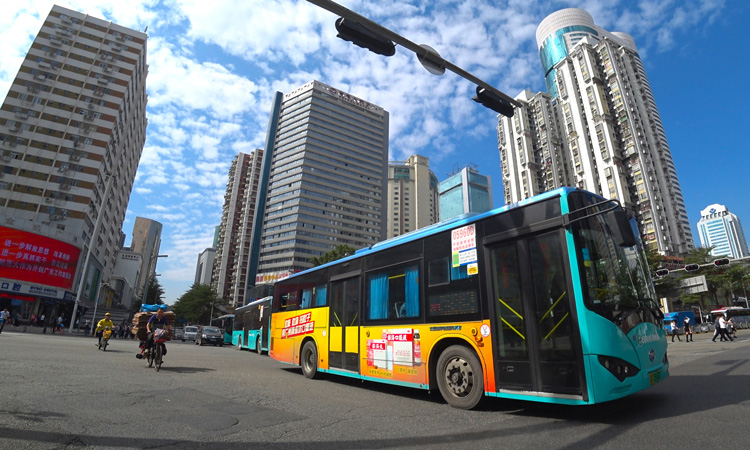

How did Shenzhen’s bus fleet come to be the largest fully-electric fleet in the world?
Liao: The process of electrification started around a decade ago. In 2008, the central government and municipal government of China were introducing specific policies to battle air pollution in the country. Electrifying public transport and private vehicles was one of the most important ways for them to achieve this, so specific policies were rolled out to incentivise city governments and operators (which are predominantly state-owned enterprises in China) to begin this process.
Shenzhen Bus Group is slightly different to 99 per cent of the other operators in China. Our majority shareholder is the municipal government, and our second largest is Kowloon Motor Bus (KMB) from Hong Kong. This gives us a more market orientated approach in the way we look at our operations.
A steady line of communication and constant feedback from manufacturers and suppliers to charging facility providers are key to the success of electrification
We started running trials for an electric fleet in 2010. Our first electric bus fleet began operation during the 2011 Universiade in Shenzhen. We procured most of our electric buses between 2015 and 2017, transitioning approximately 3,000-5,000 of our fleet to fully electric buses. It’s no coincidence that during this time subsidies from both central government and the municipal government in Shenzhen were at their highest. We completed our electrification in 2017 and converted all of our taxis to electric in 2018.
From an operational perspective, what was the transition like?
Liao: In managing the infrastructure and change, we needed to ensure that services wouldn’t be disrupted due to the different requirements of electric vehicles compared to diesel vehicles.
Infrastructure is obviously the biggest challenge that most operators face when making such a transition. You need to find the land and resources as well as the charging infrastructure providers that can work with you. Shenzhen is a very expensive city in terms of real estate, so that’s been one of the biggest challenges we’ve faced – and indeed are still facing today. It’s a constant challenge working with both private property developers and local governments, to see how we can reroute our operational space and what land is available for building infrastructure.
We pre-planned most of our routes based on the availability of charging infrastructure. We asked each of our line managers and subsidiary companies to come up with the best solutions and strategies to charge their buses, in order to build around their operations based on how charging stations are planned, and what charging points they would need to re-charge their buses.
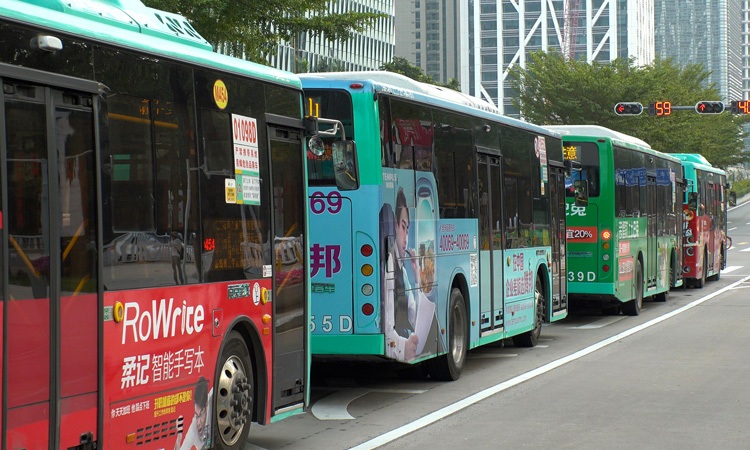

Naturally, we are often asked about charging and battery technology, as we started quite a few years ago when batteries were not as reliable as today. We worked closely with our providers and manufacturers, constantly giving feedback as to where we thought the technology could be improved. We were fortunate to have a manufacturer that is local to us, namely BYD, constantly listening to our feedback. Statistics show that we’ve given them around 900 pieces of technical feedback, 600 of which they eventually adopted. A steady line of communication and constant feedback from manufacturers and suppliers to charging facility providers are key to the success of electrification.
Liang: In terms of electric bus operation, there’s one issue not to be overlooked, and that is public acceptance of the new technology. Initially, there were concerns from the Shenzhen public with regards to safety. People would say that the electromagnetic field, the emission and the radiation from electric buses are too high, and as such could be harmful to their health. To counter this, we launched a number of campaigns placing us in neighbourhoods and explaining to the public how the buses work. In a few years we were able to alleviate these concerns and see people become more accepting of the new technology.
Unforeseen to us, our close relationship with our manufacturers also played a role in gaining public acceptance. At the very beginning, we were using the BYD NK9 model. They were the older version with four columns inside the bus to place the batteries, which were visible to passengers. We felt that if we could make the battery less visible to the public, it might help to alleviate their concerns. With this feedback considered, BYD took our advice and changed the location of the batteries, which had the desired effect on those lines.
What have your experiences been like in managing such a big electric fleet in comparison to your old diesel fleet?
Liang: In many senses electric buses are quite similar to diesel. However, undeniably, the range of a diesel bus is much further than an electric one. Our previous diesel buses could travel for approximately 400-500km on a full tank. An electric bus with a full charge, however, will usually travel around 280‑320km before needing to be re-charged. It usually takes between two and two-and-a-half hours to fully charge our electric buses, making charge time one of the most important factors in terms of running the service efficiently.
Our close relationship with our manufacturers also played a role in gaining public acceptance
In that scenario, buses would have to stop at a certain period for up to two-and-a-half hours to be fully charged, so we use an ‘overnight charging regime’, for a number of reasons: firstly, the cost of electricity in Shenzhen. In our city we have three different electricity prices, the cheapest is during the night. So, all of our buses are taken back to the depot and charged overnight. During the day, they are only returned to the depot to be recharged to 60‑70 per cent in order to finish the day’s service.
Technical operations are very important in public transport management, so we kept a log whilst running the buses. With electric buses, we care most about the battery – the battery status, current state and the maximum mileage we can get from a full charge. We signed an additional contract with our supplier stating that they would replace the battery once it drops below a certain percentage of its original state of charge. This allows us to guarantee the integrity of our service following our transition to electric buses.
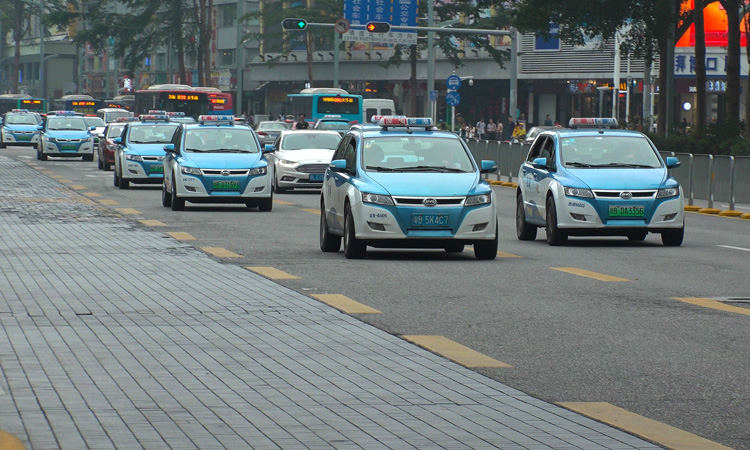

How has the decrease in government subsidies affected fleet renewal?
Liao: When we were purchasing our electric vehicles, subsidies were at about 50 per cent – that’s including all different types of subsidies. It’s quite a complicated system; the government does not give the subsidies to us, they give them to manufacturers, suppliers, infrastructure managers, charging station providers, and so on. They subsidise the entire ecosystem instead of just the bus operators. In this way, everyone in the ecosystem has the funds to keep it running.
This year, the subsidy has decreased to around 20 per cent, or even less. In light of this, we are fortunate that we have already converted all of our vehicles. However, we have also just retired our first batch of electric buses purchased in 2011, which have run their full eight-year lifecycle. Therefore, we’re now looking to procure new electric buses to replace them.
Shenzhen is a very expensive city in terms of real estate, so that’s been one of the biggest challenges we’ve faced
We’re looking at different ways financially to purchase the buses without as much of the cost subsidised. As an operator, we’re looking into various business models, including on-demand services. We’re looking into smaller buses, focusing more on first- and last-mile solutions, as Shenzhen’s Metro system has been expanding rapidly, which has great impact on our operation. We view these factors as an opportunity to adjust and optimise our routes in a way that makes the most sense for the public transportation system in our city as a whole.
Shenzhen’s success in transitioning to a fully-electric bus fleet is known by everyone in the transport sector. Do you have many other cities, operators and authorities coming to you for advice?
Liao: Our department is the international development department. It was created precisely due to the number of parties – including governments, city governments, operators and suppliers – from all over the world that come to us for advice on operations – mostly about the transition to electric vehicles. Some ask about building infrastructure, some about policy and subsidies, but mostly how we dealt with the challenges faced in the initial transition. We are actually publishing a case study in partnership with the World Bank on how we made the transition. We wanted to summarise the challenges we faced, experiences that we’ve accumulated and some of the lessons learned. We also host training for other operators. For example, we provided training to the state government in India, which was facing very similar issues, particularly with air pollution, as we were in China 10 years ago. I think there is quite a strong push from the Indian government to roll out electric buses. They’re certainly not the only ones; it’s happening across Europe, Southeast Asia, South America, Australia and New Zealand – everyone is trying to electrify.
Biographies


Hallie Liao
Hallie Liao is Head of the International Development Department at Shenzhen Bus Group. She is in charge of international business development, branding, procurement and advertisement. Liao is passionate about public policy and public transportation’s role in creating a greener urban environment, particularly after Shenzhen Bus Group became the first fully and largest electric-powered public vehicle operator in the world.
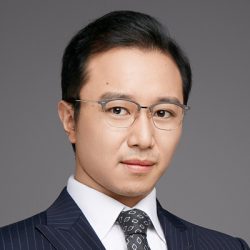

Chris Liang
Chris Liang is Operations Manager at the International Development Department at Shenzhen Bus Group, which owns the world’s first and largest pure electric bus and taxi fleet. He has worked at SZBG in fleet management, employee training, corporate management and international development. His current objective is to share the company’s knowledge on electric public transportation, and work with other companies to explore the future of a robust, sustainable and customer centric public transportation system.
Related topics
Alternative Power, Fleet Management & Maintenance, Public Transport, Sustainable Urban Transport
Issue
Issue 1 2020
Related modes
Electric bus
Related cities
Shenzhen
Related organisations
Shenzhen Bus Group




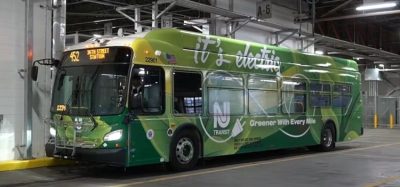
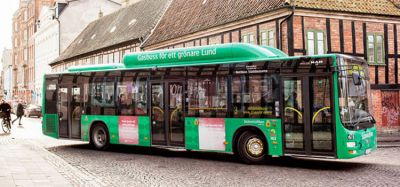
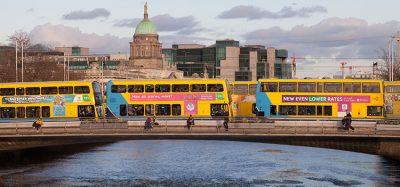


Nice article.